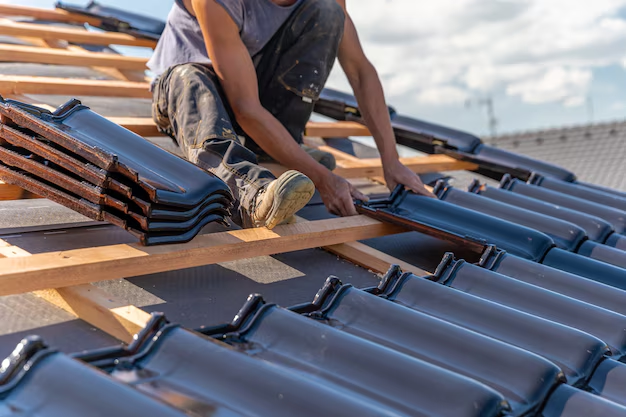Need to Secure Your Roof? Here’s How to Tarp a Roof Safely and Effectively
When faced with a leaky or damaged roof, tarping is a quick and effective way to protect your home until more permanent repairs can be made. Not only does it prevent further water damage, but it also provides peace of mind. Let’s walk through the steps of how to tarp a roof safely and explore resources that can assist with repair costs and more.
Why Tarp a Roof?
Whether it’s due to a storm, falling debris, or wear and tear, roof damage can lead to significant issues if not addressed promptly. Tarping serves as a temporary measure to safeguard your home from rain, wind, and other elements until a professional roofer can fix the damage.
Tools You'll Need
Before starting, gather these essential tools:
- Heavy-duty tarp (preferably waterproof)
- Ladder
- Measuring tape
- Utility knife
- Wood planks or furring strips
- Nails and a hammer (or a nail gun)
Step-by-Step Guide to Tarping a Roof
Step 1: Assess and Measure the Damage
Begin by inspecting the roof for damage. Note the areas requiring coverage and use a measuring tape to determine how much tarp you’ll need. It’s advisable to use a tarp that extends at least three feet beyond the damaged area on all sides to ensure complete coverage.
Step 2: Position the Tarp
Using a ladder, carefully ascend to the roof with your tarp. Ensure ladder stability to prevent accidents. Spread the tarp over the damaged area, allowing it to drape over the roof’s peak if possible. This positioning helps prevent water from pooling.
Step 3: Secure the Tarp
Use wood planks or furring strips to secure the tarp's edges. Lay these strips over the tarp edges, allowing for a snug fit against the roof's surface. Nail the strips into place securely to hold the tarp down. Safety Tip: Work with a partner to keep the tarp steady, especially on windy days.
Step 4: Check for Tightness
Ensure the tarp is tight and forms no pockets where water could collect. Adjust and secure further if necessary to maintain a smooth surface. This step is crucial in preventing further water damage.
Step 5: Monitor the Tarp Regularly
Even the best tarping efforts require regular inspection. Check after storms or windy conditions to confirm the tarp remains secured and that no sections have begun to sag or tear.
Delving into Financial Assistance
Home repairs such as reroofing can be costly, but thankfully, there are ways to alleviate the financial burden. Government assistance programs, insurance options, and credit solutions can be helpful.
Homeowner's Insurance: Many policies cover roof damage from incidents such as storms or accidents. Review your policy and contact your insurer to understand your coverage.
FEMA Assistance: In cases of natural disasters, FEMA may offer financial support for temporary housing and repairs, including tarping.
Home Improvement Loans: Consider low-interest loans designed for necessary home repairs. Many financial institutions offer rates suited to your budgets, helping spread the cost over manageable payments.
Being prepared and knowledgeable can make a world of difference when dealing with home repairs. Remember, while tarping a roof is an immediate solution, consulting with a professional roofer for permanent repairs should be your next step.
Tools for Financial Relief and Education
Here’s a collection of programs and opportunities to help your financial situation:
- 🏠 Weatherization Assistance Program: Offers aid to low-income homeowners for energy-related home repairs.
- 🧰 HUD Home Improvement Loans: Facilitates renovations and improvements to prevent foreclosure.
- 📊 Low-Interest Personal Loans: Tailored loan options for covering immediate repair costs with flexible terms.
- 🏚️ Disaster Assistance Loans: Low-interest loans for those affected by natural disasters to repair and rebuild.
- 🎓 Continuing Education Grants: Available for learning new skills and potentially shifting to lucrative career options.
Use these resources wisely to ensure your home remains safe and secure, both physically and financially.
